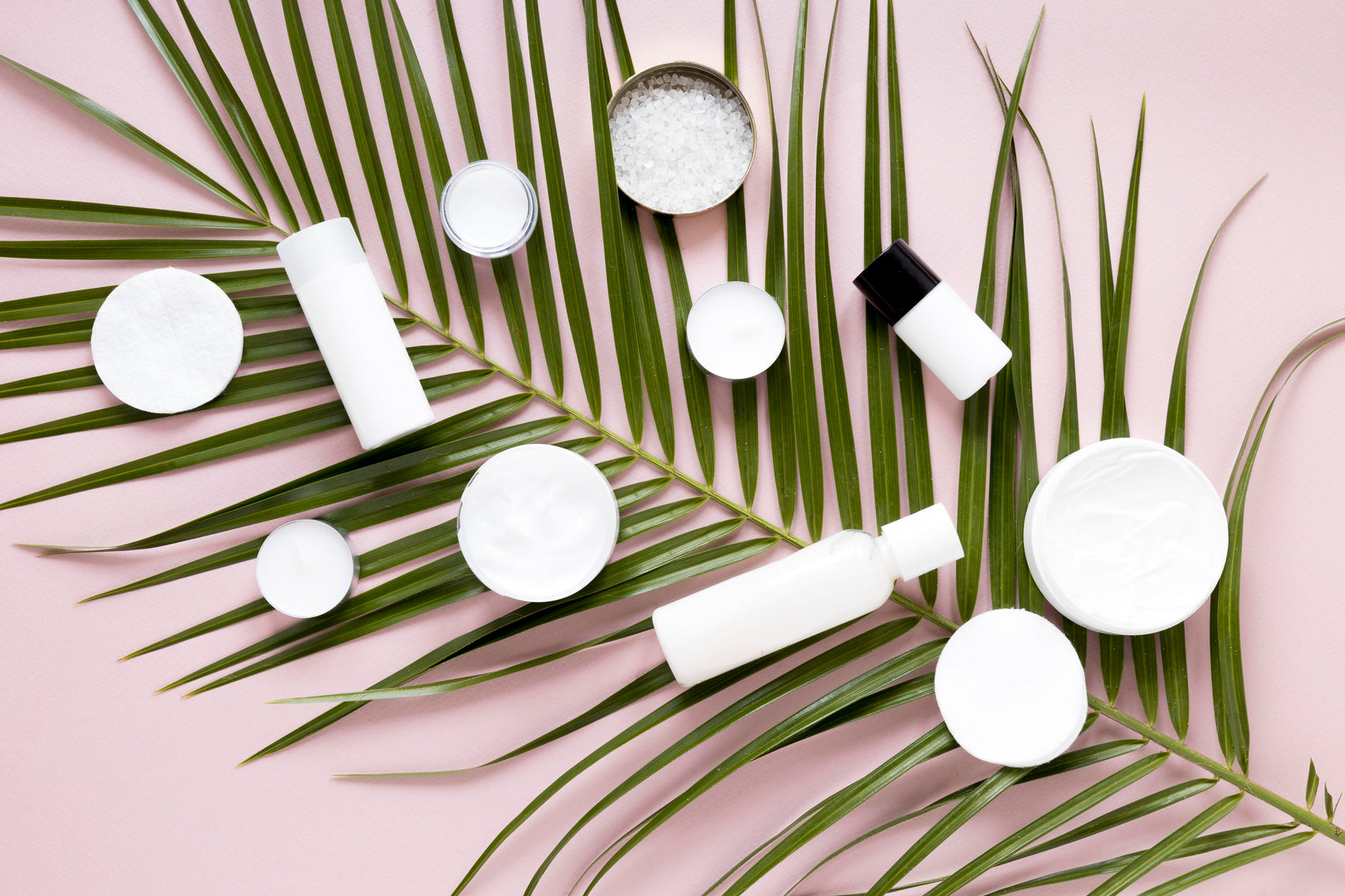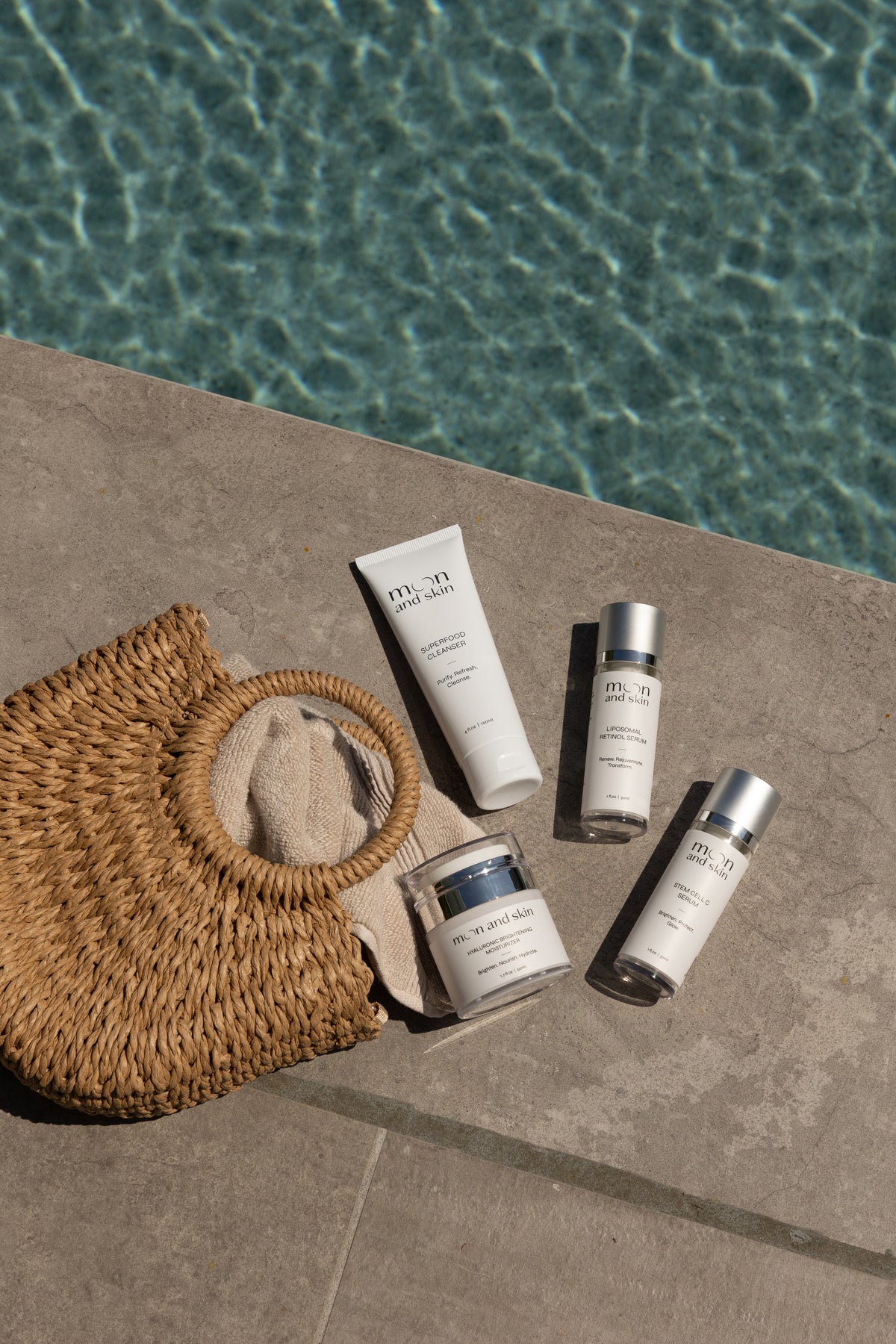Table of Contents
Introduction
Navigating the world of skincare can often feel overwhelming, especially when it comes to choosing the right moisturizer for our skin type. If you have oily skin, you may be wondering, "Is gel or cream moisturizer better for my skin?" The truth is that the answer isn't quite as straightforward as you might hope.
Recent studies indicate that approximately 50% of the population experiences oily skin at some point in their lives. This oily skin can lead to various challenges, including acne, enlarged pores, and an overall shiny appearance. Therefore, understanding how to effectively hydrate oily skin without exacerbating these issues is crucial.
At Moon and Skin, we believe in the importance of clean, thoughtful skincare that evolves with you throughout life's phases. Today, we will explore the differences between gel and cream moisturizers, helping you make informed decisions for your skincare routine. By the end of this post, you'll have a clearer understanding of which type of moisturizer may be best for your oily skin, as well as insights into our core products that could enhance your skincare journey.
Understanding Gel and Cream Moisturizers
What Is a Gel Moisturizer?
Gel moisturizers are lightweight, water-based products designed to hydrate the skin without the heaviness often associated with cream moisturizers. Their unique formulation allows them to absorb quickly, providing immediate hydration while leaving a refreshing, non-greasy finish. This makes them an ideal choice for individuals with oily skin, as they hydrate without adding excess oil.
Key Benefits of Gel Moisturizers:
- Lightweight Texture: Gel moisturizers are typically oil-free, making them feel airy on the skin.
- Fast Absorption: They absorb quickly, leaving no greasy residue.
- Hydration Without Clogging Pores: Their non-comedogenic properties mean they won’t clog pores, reducing the risk of breakouts.
- Cooling Effect: Many gel moisturizers provide a cooling sensation upon application, which can be soothing, especially in warmer weather or after sun exposure.
What Is a Cream Moisturizer?
In contrast, cream moisturizers are thicker and often oil-based. They are designed to provide a nourishing barrier on the skin, sealing in moisture and preventing transepidermal water loss. Creams are often rich in emollients and occlusives, making them more suitable for dry or mature skin types.
Key Benefits of Cream Moisturizers:
- Deep Moisturization: Creams are excellent at providing long-lasting hydration.
- Barrier Protection: They create a protective layer on the skin, which helps retain moisture.
- Nourishing Ingredients: Creams often contain beneficial oils and fatty acids that can improve the skin’s overall texture and appearance.
The Case for Gel Moisturizers for Oily Skin
Why Choose Gel Over Cream?
If you have oily skin, opting for a gel moisturizer can be particularly beneficial. Here’s why:
- Reduced Oiliness: Gel moisturizers hydrate the skin without adding excess oil, making them a perfect match for those prone to shine and breakouts.
- Prevention of Breakouts: Since gel moisturizers are typically non-comedogenic, they don’t clog pores, reducing the likelihood of acne flare-ups.
- Ideal for Layering: Their lightweight texture allows for easy layering under sunscreen or makeup, ensuring that your skin remains hydrated without feeling weighed down.
Our Recommended Gel Moisturizer: Hyaluronic Brightening Moisturizer
At Moon and Skin, our Hyaluronic Brightening Moisturizer embodies the benefits of a gel moisturizer. This formulation includes hyaluronic acid, which is renowned for its ability to attract and retain moisture, making it perfect for oily skin types while also providing a brightening effect.
Key Ingredients in Gel Moisturizers
When selecting a gel moisturizer, look for these beneficial ingredients:
- Hyaluronic Acid: A powerful humectant that draws moisture into the skin.
- Glycerin: Another humectant that helps retain skin hydration.
- Aloe Vera: Known for its soothing properties, it hydrates without adding grease.
- Niacinamide: Can help balance oil production and improve the overall texture and tone of the skin.
The Role of Cream Moisturizers in Oily Skin Care
While gel moisturizers are often favored for oily skin, there are instances where cream moisturizers can also play a valuable role. Here’s how:
Benefits of Creams for Oily Skin
- Intense Hydration: Creams can provide an extra layer of moisture, which may be beneficial during harsh weather conditions or for those experiencing dehydration.
- Barrier Function: The occlusive nature of cream moisturizers can help prevent moisture loss, which is essential for maintaining skin health.
When to Consider Cream Moisturizers
- Seasonal Changes: During colder months, if you notice your skin becoming drier, a lightweight cream may help provide the necessary hydration without overwhelming your skin.
- Combination Skin: If your skin exhibits both oily and dry areas, a cream can help nourish the dry patches while still addressing oiliness in other areas.
Our Recommended Cream: Liposomal Retinol Serum
For those looking to incorporate a cream into their routine, our Liposomal Retinol Serum offers a balanced approach. While primarily targeting signs of aging, its lightweight formula allows for use on oily skin types, providing the hydration needed without clogging pores.
How to Choose the Right Moisturizer for Your Oily Skin
Choosing between a gel or cream moisturizer boils down to understanding your skin’s unique needs. Here are some tips to help guide your decision:
Assess Your Skin Type
- Oily Skin: Generally, gel moisturizers are recommended due to their lightweight, non-greasy texture.
- Combination Skin: You might benefit from a gel in your T-zone and a cream on drier areas.
- Seasonality: In summer, gels may feel more comfortable, while creams can be beneficial in winter.
Identify Your Main Skin Concerns
- Acne-Prone Skin: Opt for gel moisturizers that are non-comedogenic.
- Dehydration: Ensure your chosen product contains hydrating ingredients like hyaluronic acid.
Consider Texture Preferences
- If you dislike the heavy feel of creams, a gel moisturizer will likely suit you better.
- For those who prefer a richer feel, a cream may be more satisfying.
Common Misconceptions About Moisturizing Oily Skin
Despite the benefits of moisturizing, several myths persist regarding oily skin:
-
Myth: Oily skin doesn't need moisturizer.
- Truth: All skin types require hydration. Skipping moisturizer can lead to increased oil production as the skin tries to compensate for dehydration.
-
Myth: Moisturizers cause breakouts.
- Truth: The right moisturizer, particularly gel-based ones, can help prevent breakouts by not clogging pores.
-
Myth: Gel moisturizers aren't hydrating enough.
- Truth: Many gel moisturizers contain potent hydrating ingredients that effectively provide moisture without heaviness.
Final Thoughts
Choosing the right moisturizer for oily skin is crucial in maintaining a healthy, balanced complexion. Gel moisturizers, with their lightweight and hydrating properties, are typically the best choice for oily skin types. At Moon and Skin, we are committed to providing clean, thoughtful skincare solutions that support your skin's needs at every stage of life.
If you’re looking to build a complete skincare routine, consider our Bundle & Save collection, which includes our core products designed to work synergistically for optimal results.
FAQ
Can I use a gel moisturizer if I have combination skin?
Yes! Gel moisturizers are excellent for combination skin as they hydrate oily areas without overwhelming drier parts.
Are gel moisturizers suitable for sensitive skin?
Most gel moisturizers are formulated to be gentle and non-comedogenic, making them suitable for sensitive skin types. However, always check ingredient lists for potential irritants.
How often should I apply my gel moisturizer?
For best results, apply your gel moisturizer twice daily—once in the morning and once at night after cleansing.
Can gel moisturizers be used under makeup?
Absolutely! Gel moisturizers provide a smooth base for makeup application without the risk of pilling or a greasy finish.
What if I have oily skin but also experience dryness?
Consider using a gel moisturizer that contains hydrating ingredients like hyaluronic acid, or try layering it with a lightweight oil or serum that won’t clog your pores.
By understanding your skin's unique needs and preferences, you can make more informed choices that lead to a healthier, more radiant complexion.







